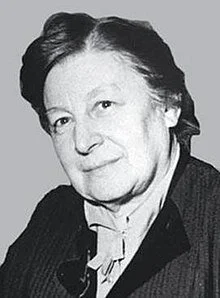The History of Autism - A Brief Overview
The term ‘Autism’ was coined by Bleuler, a German psychiatrist, in 1908 to describe a symptom of Schizophrenia, where a person had childish desires to avoid reality through social withdrawal and engagement with fantasies, in an inner world that other people couldn’t see.
This was followed by Kanner, an American child psychiatrist, in 1943, who came up with “infantile autism”. This was a result of him studying 11 children who he identified as struggling with social interaction, changes to routine and sensory sensitivity.
In 1944, Hans Asperger also studied children who had the features that Kanner identified. However, he noted that the children he studied did not have problems with their speech and had average to superior academic abilities. This would lead to the term ‘Asperger Syndrome’.
Grunya Sukhareva
Before we discuss how this fed into the first mention of autism in the DSM-II, we must talk about Grunya Sukhareva. Most historical accounts of the history of autism leave her out. She was a Soviet psychiatrist and was actually the first person to publish a list of autism traits, in 1925. That’s TWO WHOLE DECADES before Kanner. Yet history ignores her. Her work on autism was largely ignored and still goes unnoticed today. Hans Asperger did not cite her in his work, likely because she was Jewish, and he had links with the Nazi’s. She went unrecognised.
So, in 1952, the DSM-II (Diagnostic and Statistical Manual of Mental Disorders) defined autism as a psychiatric condition, describing it as a type of schizophrenia in children which was marked by detachment from reality. The theory at this time was that autism was caused by cold parenting, specifically “frigid mothers” or “refrigerator mothers”. This was widely disagreed with and disproved in the 1960’s-70’s as studies emerged showing biological links.
In 1972, Rutter, a researcher from the Maudsley Hospital, conducted the first genetic study into autism. He claimed that “the autistic child has a deficiency of fantasy rather than an excess”. This started the myth that autistic people have no imagination.
The DSM-III (1980) defined autism as a “pervasive developmental disorder”, no longer linked to Schizophrenia. Its three criteria were: no interest in other people, severe communication problems and bizarre reactions to surroundings, evident within the first 30 months of life.
In 1987 this was revised, adding ‘Pervasive Developmental Disorder - Not Otherwise Specified’ (PDD-NOS) to the DSM-III, which was the ‘mild end of the spectrum’. This reflected researchers beginning to understand autism as a spectrum (though not in the way we would describe it today).
Throughout the 1990’s, research studying the genetic basis of autism continued, but although hundreds of genes were identified, none could be exclusively linked to autism. They decided that instead autism would be classed as a spectrum. The DSM-IV (1994) highlighted this spectrum for the first time, by including autism, PDD-NOS and Asperger’s Disorder as sub-types of autism.
Other theories were developed during this time, such as the Extreme Male Brain Theory by Simon Baron-Cohen in 2002. This was based on the idea that there are measurable differences between male and female brains, which of course was highly criticised. He proposed that autistic people are primarily interested in stereotypically male topics, and see and process the world through a ‘male lens’. This has added to the stereotypes that autistic people are mathematical and like computers.
In 2013, the DSM-V introduced ‘Autism Spectrum Disorder’, defined by “persistent impairment in reciprocal social communication and social interaction” and “restricted, repetitive patterns of behaviour”, present from early childhood. This removed Asperger’s Syndrome and PDD-NOS, but introduced Social Communication Disorder, as a condition which resembles the social communication features of autism, but without the restrictive and repetitive behaviour. Interestingly, Grunya Sukhareva’s 1925 description of autism traits is comparable to this diagnostic criteria. She highlighted the autistic children’s strong interests, difficulty with facial expressions and sensitivity to noise and smells. Our understanding of autism history must include her, and not silence her any longer.
Nowadays, we understand autism to be a neurodevelopmental condition, whereby autistic people have social and communication differences to non-autistic people.
We understand that the spectrum is not linear, and that functioning labels (i.e. ‘severe or mild’ or ‘high or low functioning’) are damaging to all autistic people.
Sources:

